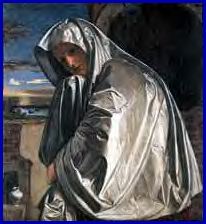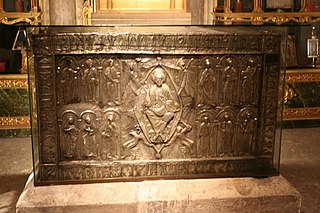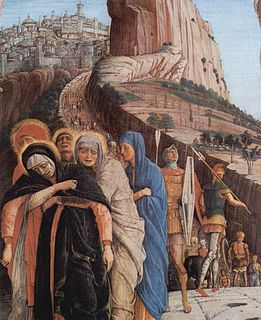| John 20:16 | |
|---|---|
← 20:15 20:17 → | |
 William Etty's Christ Appearing to Mary Magdalene after the Resurrection first exhibited in 1834 | |
| Book | Gospel of John |
| Christian Bible part | New Testament |
John 20:16 is the sixteenth verse in the twentieth chapter of the Gospel of John in the New Testament of the Bible. The verse describes the moment that Mary Magdalene realizes that Jesus has returned from the dead, when she recognizes his voice calling her name

The Bible is a compilation of many shorter books written at different times by a variety of authors, and later assembled into the biblical canon. Since the early 13th century, most copies and editions of the Bible present all but the shortest of these books with divisions into chapters, generally a page or so in length. Since the mid-16th century editors have further subdivided each chapter into verses - each consisting of a few short lines or sentences. Sometimes a sentence spans more than one verse, as in the case of Ephesians 2:8–9, and sometimes there is more than one sentence in a single verse, as in the case of Genesis 1:2.
John 20 is the twentieth chapter of the Gospel of John in the Bible. It relates the story of Jesus' resurrection. It relates how Mary Magdalene went to the tomb of Jesus and found it empty. Jesus appears to her and speaks of his resurrection and dispatches Mary to tell the news to the disciples. Jesus then appears to his disciples. The chapter is seemingly the conclusion to the Gospel of John, but it is followed by the somewhat tangential John 21, causing some biblical scholars to suggest that John 20 was the original conclusion of the Gospel, and John 21 was a later addition. The events related in John 20 are described somewhat differently in Matthew 28, Mark 16, and Luke 24.

The Gospel of John is the fourth of the canonical gospels. The work is anonymous, although it identifies an unnamed "disciple whom Jesus loved" as the source of its traditions. It is closely related in style and content to the three Johannine epistles, and most scholars treat the four books, along with the Book of Revelation, as a single corpus of Johannine literature, albeit not from the same author.













